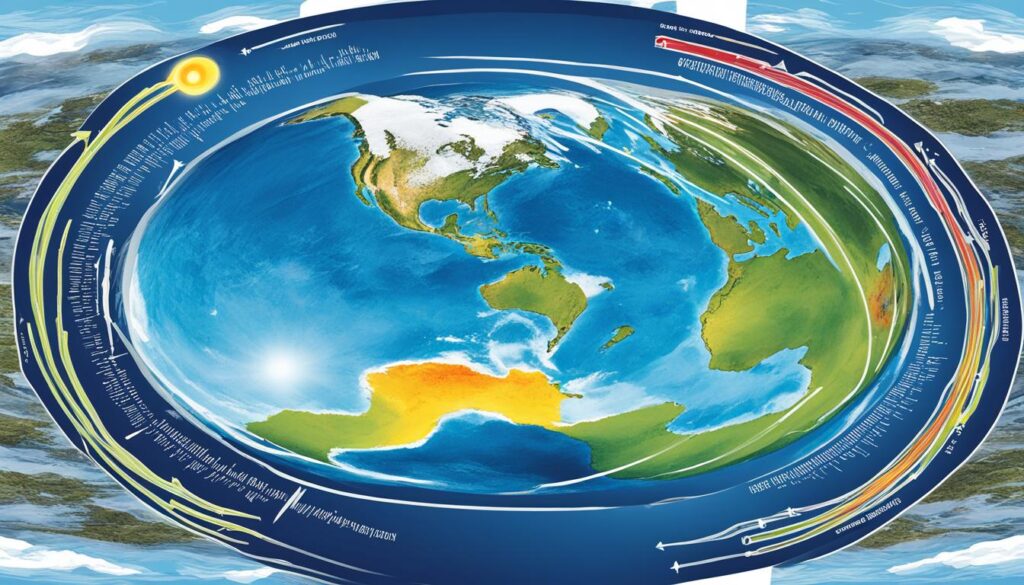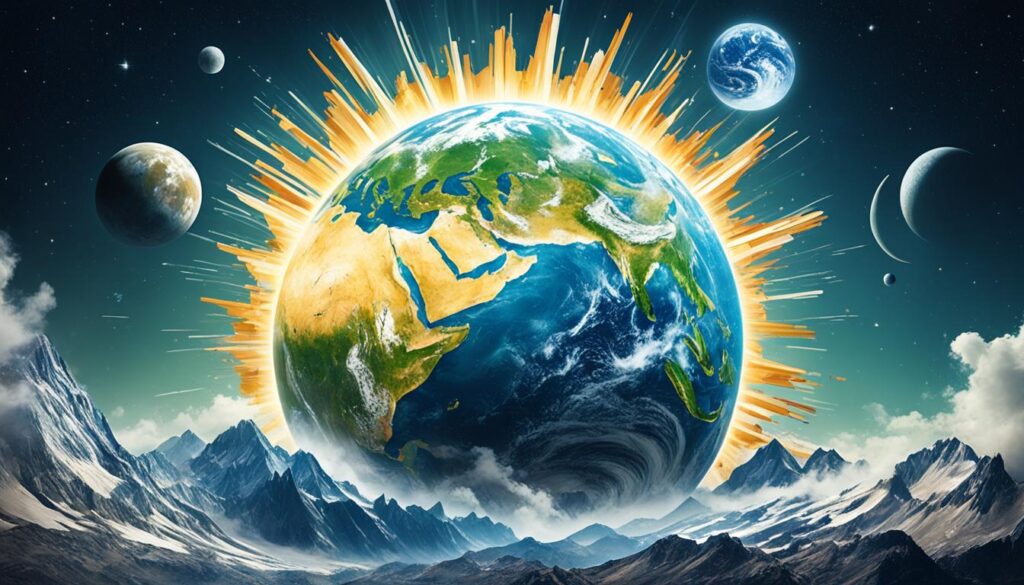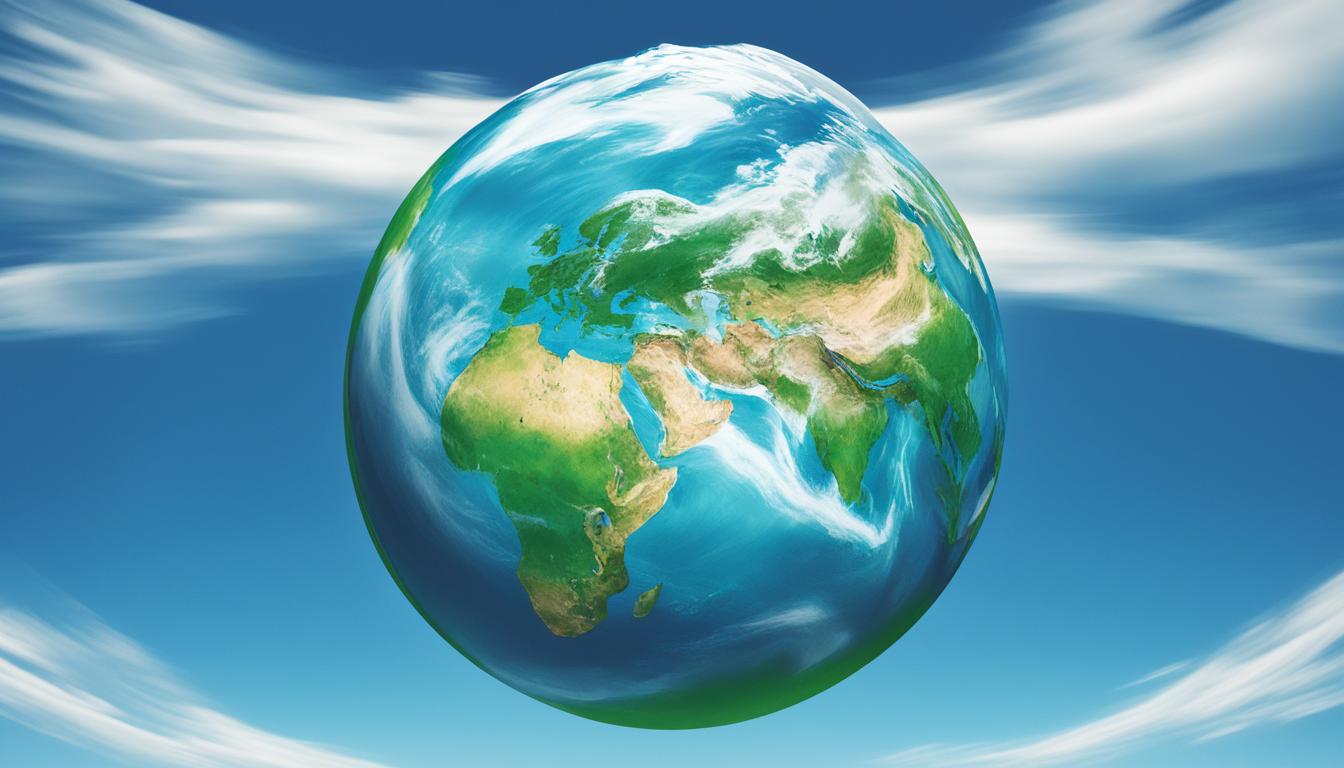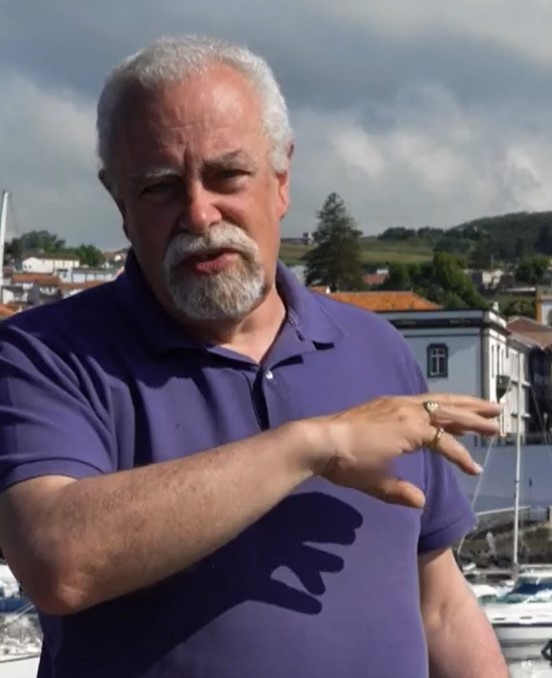Our planet is facing the effects of global warming, and one surprising result is that Earth’s rotation is slowing down. Studies show that the melting of polar ice caps due to climate change is causing a big change in the planet’s mass. This shift is affecting how fast Earth spins on its axis1.
In the last 50 years, global warming has made days shorter by about 0.0025 seconds. This is because of changes in Earth’s liquid outer core. This slowdown means our clocks might need to be adjusted, possibly by skipping a “leap second” in 2028 or 20291.
Key Takeaways
- Global warming is causing Earth’s rotation to slow down, with days becoming slightly shorter over the past 50 years.
- The redistribution of Earth’s mass due to melting polar ice caps is a primary driver of this slowdown.
- The need for leap seconds, which are occasionally added to UTC to compensate for changes in Earth’s rotation, may be impacted by these findings.
- The International Bureau of Weights and Measures (BIPM) has voted to abolish leap seconds by 2035, but the implications of Earth’s changing rotation are still being debated.
- Factors like the gravitational pull of the sun and moon, as well as tidal bulges in the oceans, also influence Earth’s rotation and the need for leap second adjustments.
Earth’s Rotational Speed and Its Causes
The Earth’s rotation is key to its movement, shaped by many factors. The Moon’s gravity is a big reason, creating tidal forces2. These forces slow down the Earth by making oceans bulge out.
Factors Influencing Earth’s Rotation Rate
Other things also affect the Earth’s spin2. For example, the Earth’s core fluids move, sometimes speeding up or slowing down the planet. Seismic activity and changes in the Earth’s mass, like ice melting, also play a part3.
Tidal Forces and the Moon’s Gravitational Pull
The Moon’s gravity is a big factor in slowing the Earth’s spin2. This creates bulges in the oceans, slowing the planet down. Over time, these forces helped shape our day-night cycle.
Today, the Earth’s rotation is pretty steady, but it changes a little for many reasons2. Knowing why these changes happen helps us keep accurate time and predict the future.
| Factors Affecting Earth’s Rotation Rate | Impact |
|---|---|
| Tidal Forces from the Moon | Slightly Slows Down Rotation |
| Fluid Movement in Earth’s Outer Core | Can Counteract Tidal Slowing Effect |
| Seismic Activity | Influences Rotation Rate |
| Melting of Polar Ice Caps | Slows Down Rotation3 |
The Earth’s rotation is complex, influenced by many things like tidal forces, core fluids, and changes in mass. Knowing these factors helps us understand and predict the Earth’s rotation. This is important for keeping accurate time and for science.
Melting Polar Ice Sheets and Mass Redistribution
As the planet’s climate changes, the melting of polar ice sheets is making Earth spin slower4. This melting moves mass to the equator and less to the poles4. This shift changes how fast the planet spins4.
Recently, Earth started spinning faster4. This led to talks about removing a “negative leap second” from clocks by 20264. But, the melting of ice has pushed this back to around 20294.
Over millions of years, Earth’s rotation has slowed down4. About 70 million years ago, days were about 23.5 hours long, and a year had 372 days4. This slowing down is due to many things, like ocean tides, the moon’s gravity, and changes in the Earth’s core4.
| Factors Influencing Earth’s Rotation | Impact on Rotation |
|---|---|
| Melting polar ice sheets | Slows down rotation due to mass redistribution |
| Friction from ocean tides | Slows down rotation |
| Moon’s gravitational pull | Slows down rotation |
| Fluctuations in Earth’s core | Can speed up or slow down rotation |
| Uplift of Earth’s crust from ice sheet removal | Speeds up rotation |
Climate change is making the melting of polar ice and mass redistribution slow down Earth’s rotation45. Timekeepers are working to fix this, aiming to stop leap second changes by 20355.
But, warming ice caps have already changed when we need a leap second, causing delays5. Sea levels are rising, and experts warn coastal areas to prepare for big sea level increases due to climate change5.
“The melting of polar ice has delayed the possibility of adding a negative leap second by about three years, estimated to occur around 2029.”
The Effect of Climate Change on Earth’s Rotation
Climate change has many effects, including slowing down Earth’s rotation. As the planet’s ice melts, the water moves and changes how our world spins6.
Shifting Water Mass and the Figure Skater Analogy
Think of a figure skater to grasp this idea. When they stretch their arms and legs, they spin slower. This is because their mass moves around. Earth works the same way. Melting ice at the poles changes the planet’s rotation speed67.
Picture Earth as a figure skater. The melting ice is like the skater’s arms and legs. As the ice melts and moves to the equator, Earth spins slower7.
This change affects how we keep time and global systems work. The melting ice is making timekeeping delay the leap second by three years, from 2026 to 20296.
“The melting of polar ice due to human-driven climate change has slightly slowed the Earth’s rotation.”7
Climate Change Is Slowing Earth’s Rotation
The world’s climate is changing, and it’s having big effects. One big change is Earth’s rotation is slowing down because of global warming8. The melting of ice at the poles and the way water moves around the planet are the main reasons for this8.
As the poles warm up, ice melts, raising sea levels and changing the planet’s weight balance8. This shift makes Earth rotate slower8. Professor Duncan Agnew from the University of California, San Diego, says these changes are because of global warming from human actions8.
This slowdown in Earth’s rotation affects how we keep time and global systems8. Scientists think we might need to adjust atomic clocks to match the planet’s new pace. This could mess with satellites, money systems, and energy use8.

The melting of polar ice is well-known, but its effect on Earth’s rotation is less known but just as important8. Scientists are watching this closely. It’s key we act to stop global warming and its effects8.
| Metric | Value |
|---|---|
| Increase in Earth’s Rotation (Pre-Climate Change) | Slightly increasing for decades8 |
| Decrease in Earth’s Rotation (Due to Climate Change) | Slowing down due to the melting of polar ice sheets8 |
| Predicted Negative Leap Second | May need to be subtracted from atomic clocks to keep them aligned with the planet’s slower rotation8 |
| Impact on Global Systems | Potential disruptions to satellite operations, financial systems, and energy systems8 |
Implications for Timekeeping and Leap Seconds
Earth’s slowing down due to climate change affects timekeeping and leap seconds9. Coordinated Universal Time (UTC) uses leap seconds to keep up with the planet’s changing rotation.
Coordinated Universal Time and Leap Seconds
UTC relies on atomic clocks for precise timekeeping, unlike Earth’s rotation9. Since 1972, 27 leap seconds have been added to UTC to fix the Earth’s slowing down9. This keeps civil time in sync with atomic time.
9 But, global warming makes the Earth’s rotation speed up, possibly needing negative leap seconds9. By 2029, UTC might need a negative leap second, making minutes last 59 seconds.
| Metric | Value |
|---|---|
| Leap Seconds Added to UTC Since 1972 | 279 |
| Predicted Year for Negative Leap Second | 20299 |
| Trend in Polar Ice Melt | 5 times faster than 30 years ago10 |
10 The planned 2026 negative leap second might be delayed to 2029 due to ice melt effects10. This shows how hard it is to manage timekeeping with Earth’s unpredictable rotation.
910 Negative leap seconds bring up questions about their feasibility and how devices will adjust910. Some suggest bigger changes at set times to make leap seconds easier to handle.
“The inner core of the Earth influences the planet’s rotation speed, with changes in the core ultimately affecting Earth’s angular momentum and rotation rate.”9
As climate change’s effects grow, managing timekeeping and leap seconds will get harder. We’ll need new solutions to keep the world in sync.
The Need for a Negative Leap Second
Earth’s rotation is slowing down because of climate change. This means we might need a negative leap second soon11. Scientists say we won’t need one until 2029 because of changes in polar ice11. A negative leap second is needed to keep our clocks in sync with Earth’s slowing down.
Since 1972, we’ve added leap seconds to our clocks. But Earth’s rotation is getting slower, about a second each year12. This has led to talks about adding a negative leap second from 2026 to 202912.
Experts are watching this closely. Adding seconds is easy, but taking them away could be hard for computers and precise clocks12. They’re not ready for a negative leap second.
| Metric | Value |
|---|---|
| Leap Seconds Added Since 1972 | 27 |
| Maximum Notice for Leap Seconds | 6 months |
| Leap Seconds Added in Last 23 Years | 4 |
Climate change makes us think about a negative leap second. It shows how our environment affects timekeeping1112. We need to work together to keep our clocks accurate and reliable1112.

Challenges and Consequences of a Negative Leap Second
A negative leap second, where a second is taken away, brings big challenges for systems that need precise time13. This is more tricky than adding a second, as many systems haven’t dealt with losing a second before. This could lead to big problems13.
Impact on Computer Networks and Precise Timekeeping
Computer networks and technologies that need exact time are worried about a negative leap second14. Systems like financial transactions, communication networks, and GPS devices could break if a second is taken away14. This could cause big issues with syncing, data errors, and other problems.
Also, negative leap seconds are hard to predict, making it tough for devices and systems to stay in sync9. This could hurt the trust in important infrastructure and services. It could also cause big economic and social issues9.
Experts think using bigger changes at set times could be better than negative leap seconds9. This way, timekeeping could be more stable and predictable. It would lower the risks of sudden time changes.
“The last leap second was added at the end of 2016, and global warming may cause a negative leap second to be needed by the end of 2026, but that might not be necessary until 2029 due to the impact of climate change.”13
As climate change and other factors slow down the Earth, keeping accurate time is more important than ever13. The problems with a negative leap second show why we need strong and flexible time systems. These systems must adapt to the Earth’s changing pace.
Debates on the Future of Leap Seconds
The debate about leap seconds has grown more intense lately. In 2022, the International Bureau of Weights and Measures (BIPM) decided to stop adding leap seconds by 203515. But, new studies show Earth’s rotation is slowing down because of climate change. This might mean we need a negative leap second soon.
Earth’s rotation speed is a big worry now. Since 1982, global temperatures have gone up a lot, adding 0.20°C every decade15. This warming is melting ice at the poles, making Earth rotate slower. Scientists think clocks might skip a second around 202915. They were expecting a negative leap second in 2026, but now it’s delayed by at least three years15.
Earth’s speed and timekeeping are getting harder to predict because of climate change15. The BIPM’s plan to stop leap seconds by 2035 might change because of new findings on Earth’s slowing rotation. As we deal with climate change, the importance of leap seconds and accurate timekeeping will keep being debated.
FAQ
What is causing the slowdown in Earth’s rotation?
How does the shifting of mass due to melting ice sheets lead to a slowdown in Earth’s rotation?
What are the implications of the slowdown in Earth’s rotation?
What are the challenges and consequences of a negative leap second?
How have timekeeping organizations responded to the slowdown in Earth’s rotation?
Source Links
- Global Warming Is Slowing the Earth’s Rotation
- Human activities slowed down Earth’s rotation
- Climate change is causing days to get longer by slowing down the Earth
- Melting polar ice is slowing the Earth’s rotation, with possible consequences for timekeeping
- Earth’s Rotation Is Alarmingly Slowing Down
- Polar ice is melting and changing Earth’s rotation. It’s messing with time itself | CNN
- Human-driven climate change has ‘slowed the Earth’s rotation’ and could affect how we measure time, study suggests
- Earth’s rotation slowing down due to melting ice, scientists say
- Negative Leap Seconds: Global Warming is Slowing Down Time
- Climate change could affect timekeeping, study says
- Climate change is delaying world clocks’ need for a ‘negative leap second’
- Melting ice caps are changing Earth’s rotation, causing the need for a ‘negative leap second’
- Climate change is altering Earth’s rotation enough to mess with our clocks
- Climate change will affect how time is corrected using ‘negative leap seconds’ – Physics World
- We know polar ice is melting. But now, it’s changing time

